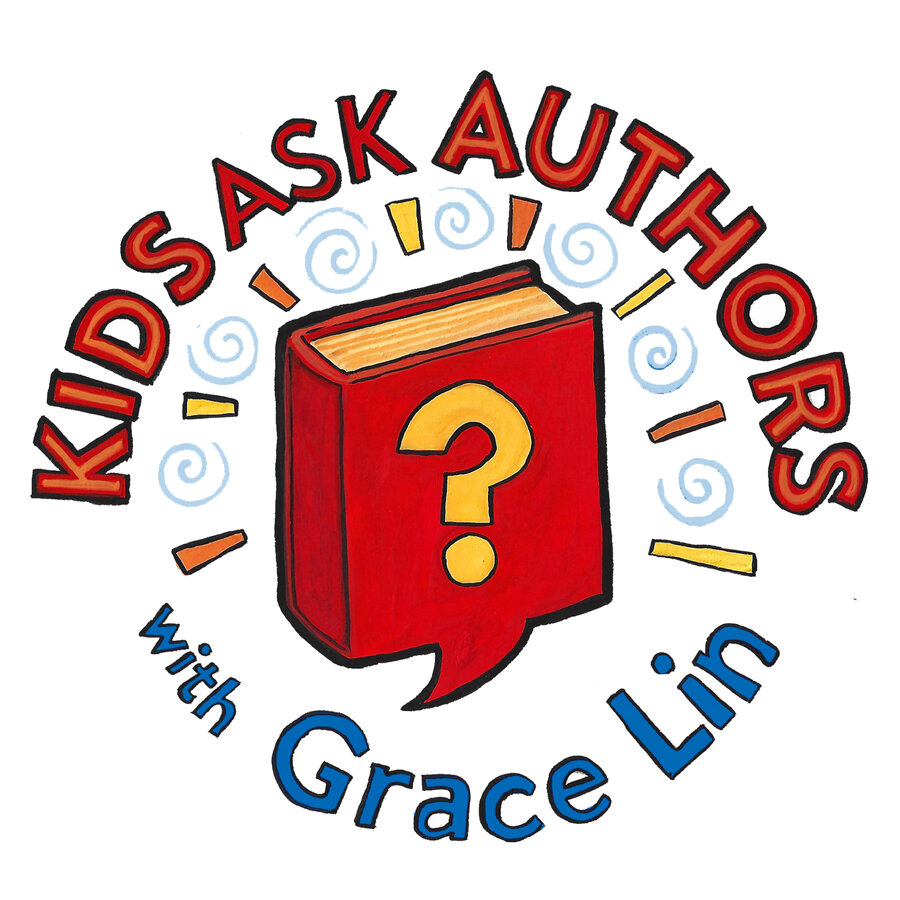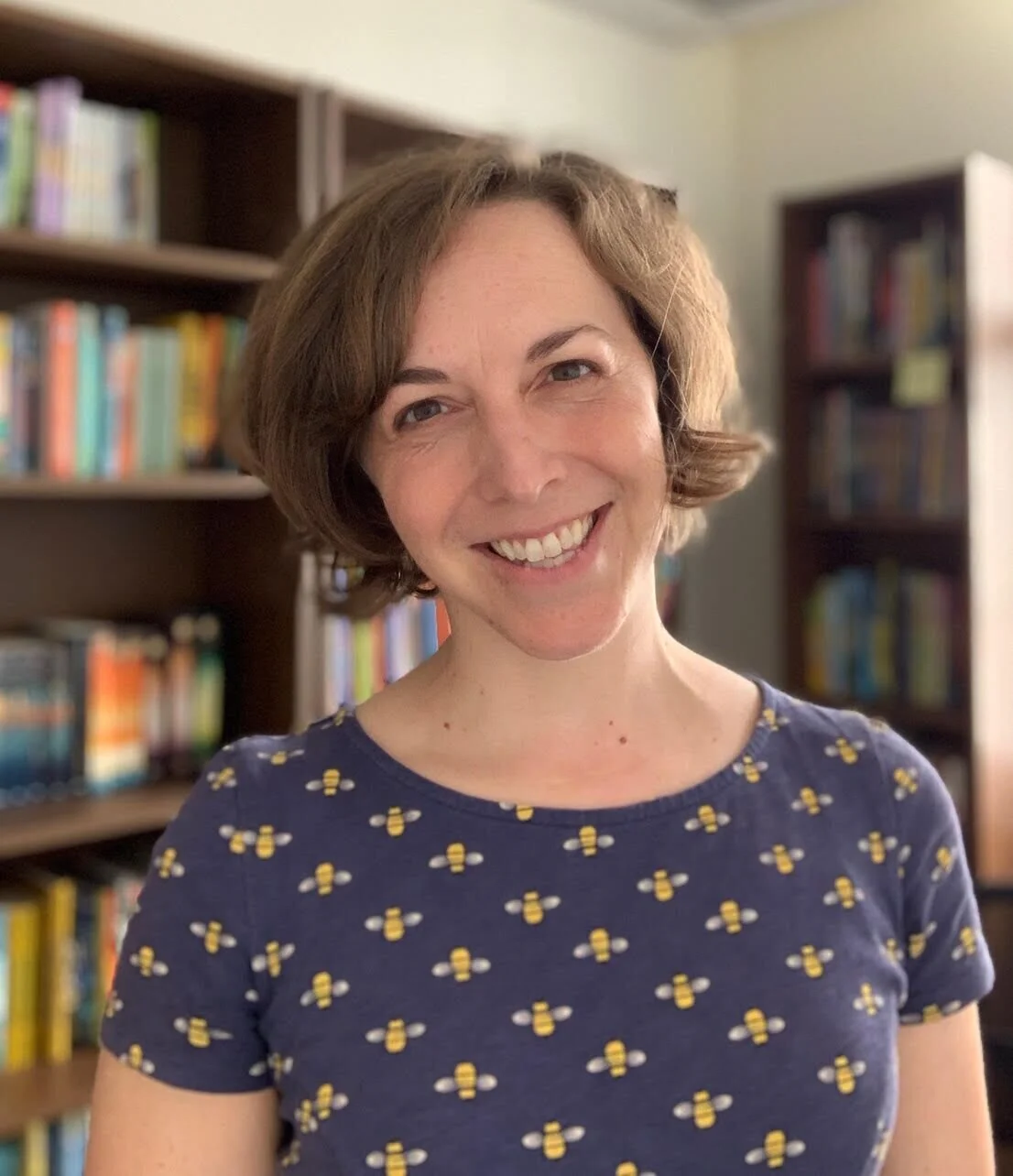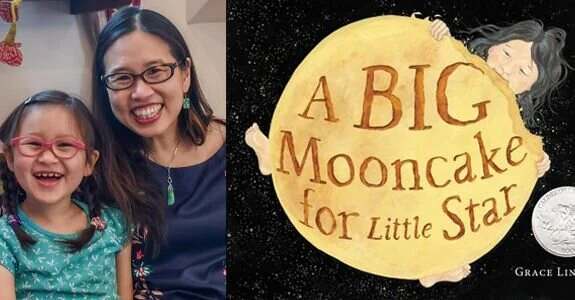Episode #24: How do you make your pictures look so good? with Evan Turk
Welcome to Episode #24: How do you make your pictures look so good? Join us with Evan Turk!
TRANSCRIPT:
Grace Lin: Hello, I'm Grace Lin, children's book author and illustrator of many books, including the middle grade novel Where The Mountain Meets the Moon and the picture book A Big Mooncake for Little Star. Today I'm here with Evan Turk, the author illustrator of the picture books You Are Home, An Ode to the National Parks and The Storyteller. Hello Evan.
Evan Turk: Hi, Grace.
Grace Lin: So, are you ready for today's question?
Evan Turk: Yes, I'm ready.
Grace Lin: Okay. Today's question is from a young boy named Alex. He asks, "How do you make your pictures look so good? And how long does it take you?"
Evan Turk: Well, first of all, thank you for saying that my pictures look good, but how do I make them so good? So, a lot of drawing just comes down to practice. So when I'm working on a book, sometimes I'll practice for a couple of months before I start on the final artwork for the book. And by the time I get to the final artwork, it's easier for me because I've been practicing. So the more drawings I do ahead of time, the better they turn out. And for how long does it take for me to do them? That depends on what type of materials I'm using for the artwork. So sometimes it could take me a few days to make it if I'm doing a collage and putting lots of different materials in it. But for some of them, like the illustrations in You Are Home, An Ode to the National Parks, I was doing them out while I was hiking so I wouldn't have that much time to be able to make them. So it might only take me an hour or two to do the entire illustration.
Grace Lin: Wow. Well, I agree. I think that for me, I practice and practice and practice. I mean in some ways we've been practicing our whole lives drawing, right?
Evan Turk: Definitely.
Grace Lin: And then for books I think I always start with sketches and then I even do things called color studies where we kind of worked out the color ahead of time. So, when I finally get to the finished picture, I've already painted it one or two times before. So that's why I think it looks so good.
Evan Turk: Yeah. I'm the same way, where I'll do a lot of things called thumbnail sketches where they're called that because they could be as tiny as your thumbnail and you do all these little sketches and then you do some bigger sketches. Sometimes they're in color, sometimes they're in black and white, and by the time you get to the final artwork, it's like you've already figured out everything you need to figure out.
Grace Lin: So, even though as you say that it only takes an hour maybe to do that last picture, it actually takes quite a lot longer to do it. Maybe it might take me a week to do that one painting, but I've been working on that one painting before with all those sketches and drawings ahead of time. So really it probably takes me ... I don't know, maybe even a month to do a drawing if I think about it that way.
Evan Turk: That's true. And for some books, like the next one that I'm working on takes place in Renaissance Venice. And so for a lot of those illustrations I had to do a lot of research to figure out what kind of clothes people wore during that time, what kind of buildings were around, what the architecture looked like, and so if you include of that in each illustration, there's a lot of work that happens before you even get to the page.
Grace Lin: Yeah, research is also a way that we make your pictures look good too. I know for my book A Big Mooncake for Little Star, I took a lot of photos of my daughter Hazel so that I could use her in the book. So photo reference, those are other tricks that we use to make our pictures look good.
Evan Turk: That's true. And for the national parks' book, sometimes I would go around and I would be driving around or hiking for hours and doing little sketches of things that would then influence and I'd use them as reference when I got back to my studio to do some of those drawings. So it might've taken me a whole day to do the research, but the actual drawing only took me a couple hours once I got home.
Grace Lin: But that's why the pictures are so good because we work so hard at them and hopefully you've like them so much. So thank you, Alex, for asking your question. Thank you, Evan, for being here. I hope you enjoyed your question being answered, Alex.
Evan Turk: Well, thank you for having me.
Grace Lin: Bye.
Today’s book review comes from Alison Morris! She will tell us about The Oldest Student: How Mary Walker Learned to Read by Rita Lorraine Hubbard & Oge Mora.
If any of you out there have ever had a grownup tell you that they were too old to learn something new, I have got the perfect book for you to share with them to prove them wrong. The book is called, The Oldest Student, How Mary Walker Learned to Read, written by Rita Lorraine Hubbard and illustrated by Oge Mora. This is a true story nonfiction picture book with beautiful illustrations that tells a story about a woman who learned to read when she was ... wait for it, 116 years old, and she lived for a number of years after that, using her reading skills. She didn't die until she was 121. Her story is moving. It's inspiring, and it is a book that will wow the adults in your life. So if you want to impress them, show them, The Oldest Student, How Mary Walker Learned to Read.
Alison Morris is a nationally recognized children's book buyer with an infectious enthusiasm for reading and 20 years' experience matching books to readers. As the Senior Director of Title Selection for nonprofit First Book, she oversees the curation of children’s and young adult books on the First Book Marketplace, hand-selecting a diverse range of titles that speak to and address the needs of kids in underserved communities, with a keen eye to inclusion, authenticity, and kid-appeal. She previously served as Senior Editor at Scholastic Book Clubs, Children's Book Buyer for Wellesley Booksmith and The Dartmouth Bookstore, and was the founding blogger of the ShelfTalker children’s book blog for Publishers Weekly. She'll be joining us from her home near Washington, DC where she spends LOTS of time discussing books with her husband, illustrator and graphic novelist Gareth Hinds.
More about today’s author:
Evan Turk is an award-winning illustrator, author and animator living in Croton-on-Hudson with his husband, Chris, and two cats, Pica and Bert. His work has been featured in The New York Times, The Wall Street Journal, The Washington Post, The Chicago Tribune, and NPR. He has exhibited work at The Society of Illustrators, ArtsWestchester, Mystic Seaport Museum in Connecticut, The Petit Palais Museum of Fine Art in Paris. A graduate of Parsons: The New School for Design, his illustration and animation have been shown all over the world. He grew up in Colorado and loves nature and being outdoors. He continues his studies with Dalvero Academy, a private illustration school in New York City. Evan loves to travel all over the world and learn about other people and places through drawing and the interactions that come from it.
Evan speaks to kids and adults across the country and loves talking with them about storytelling and making art.
Grace Lin, a NY Times bestselling author/ illustrator, won the Newbery Honor for Where the Mountain Meets the Moon and her picture book, A Big Mooncake for Little Star, was awarded the Caldecott Honor. Grace is an occasional commentator for New England Public Radio , a video essayist for PBS NewsHour (here & here), and the speaker of the popular TEDx talk, The Windows and Mirrors of Your Child’s Bookshelf. She is the co-host of the podcast Book Friends Forever, a kidlit podcast about friendship and publishing (geared for adults). Find her facebook, instagram , twitter ( @pacylin) or sign up for her author newsletter HERE.
Thanks to the High Five Books & Art Always Bookstore and Ms. Carleton’s 2nd grade class at Jackson Street School for their help with our kid questions and reviews. Also, special thanks to the Eric Carle Museum of Picturebook Art for helping to facilitate today's interview.








